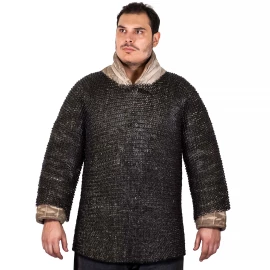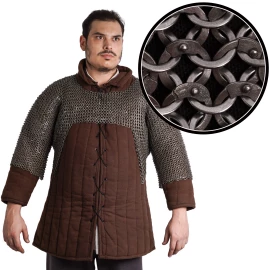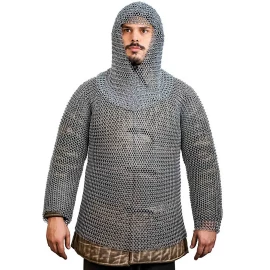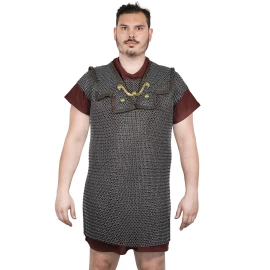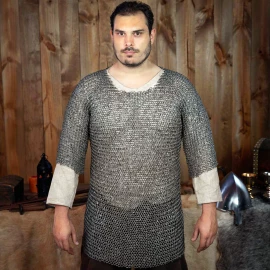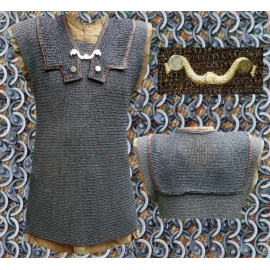Chainmail shirts
Chain Mail shits, tunics and armor in general has been widely used since the early Middle Ages. The English name Hauberk derives from the Old Frankish word "halsberg", which originally referred to the neck protection. Before the advent of plate armor in the High Middle Ages, it was common for nobles and mercenaries to wear chain mail as a primary body protector. This is documented by the depiction of Norman warriors on the Bayeux tapestry.
Filter products

A chainmail shirt was made up of hundreds of metal rings that protected the wearer from stabbing and slashing attacks. Despite the rapid development of weapons towards the end of the Middle Ages, the shirt stuck around all the way into modern…
Chainmail shirts
It is not yet clear who invented the chainmail. It could have been Celtic tribes that were in present-day Romania in the 3rd century BC. Other candidates could have been Etruscans living in what is now Italy. The Roman historian Varro attributes this invention to the Celts. No other armor is as diverse and omnipresent as the chain mail armor. Its usefulness in warfare demonstrates its expansion: from Europe over the Middle East, to India and further to Japan!
Essentially, it is a metal mesh that absorbs the blows on the arms and body and prevents cut injuries - as long as the rings can stand up to. The ring mesh generally does not stand up to stabbing attacks of arrows, spears and lances.
The production of chain mail armor was very toilsome! Several hundred man-hours were needed to make a chainmail hauberk. First you have to make rings of wire, for example by wrapping it around wooden stick. The spirals formed in this way must be cut into rings. For riveted rings, the ring ends must be flattened and the rivet holes punched. To work with the rings, the Sarworter (chain mail armorer) required special pliers.
Although the production of ring armor was lengthy, a chain armor could be used for decades. The corrosion of the rings was rubbed off by itself when moving. The repairs were nothing complicated. Parts of the chain mail armor of the fallen enemies could be used as well.
The production of chain armor was very costly until the Middle Ages, when the cost of production finally began to decline. Production processes have been optimized into lines. The production was divided into several sub-processes. Within the workshops there was specialization and increased efficiency. In England, these changes led to a decrease in production costs down to between ¼ and 1/8 of the former cost. Such a striking price cut made the chain armor affordable for ranks of ordinary medieval mercenaries.



